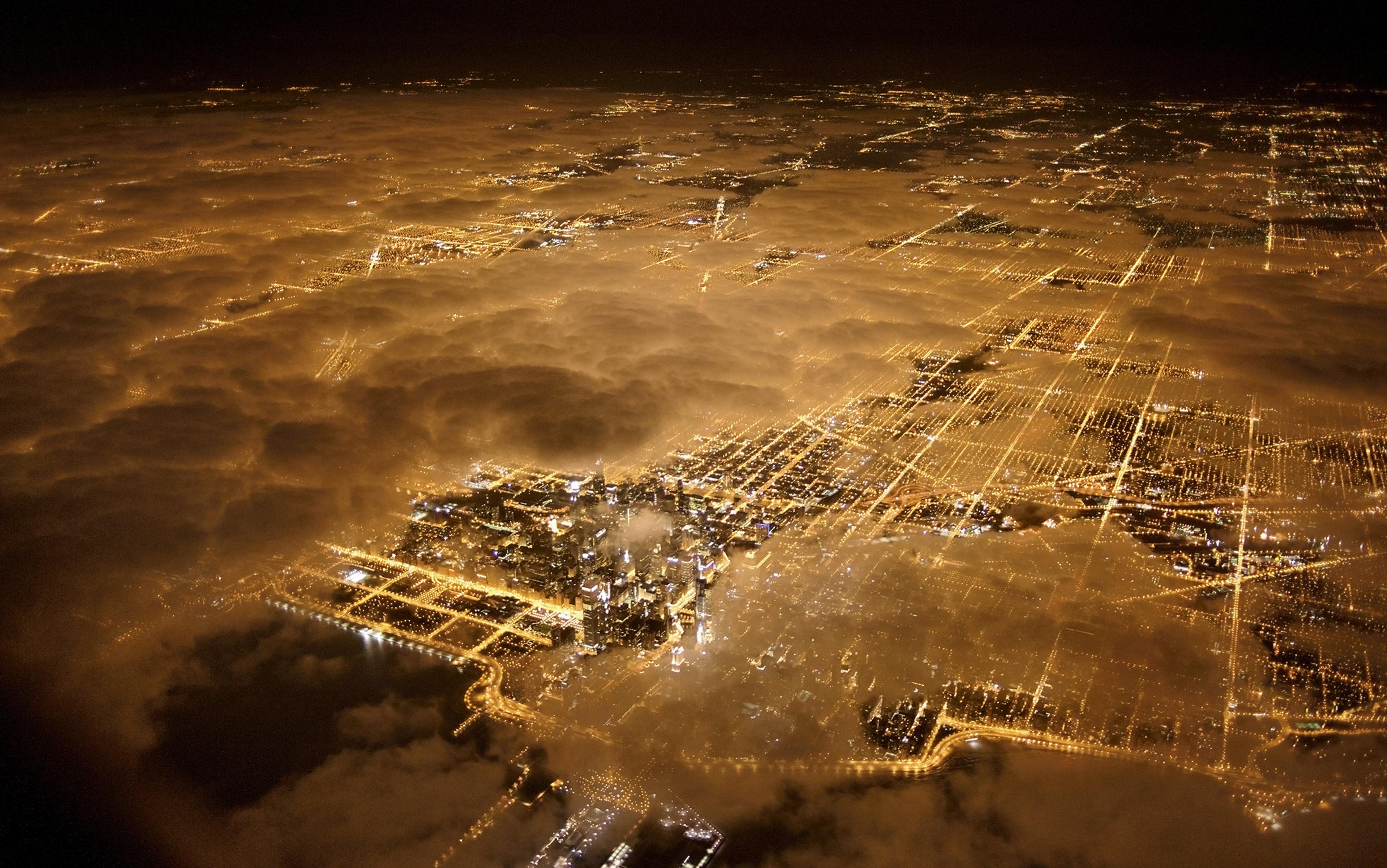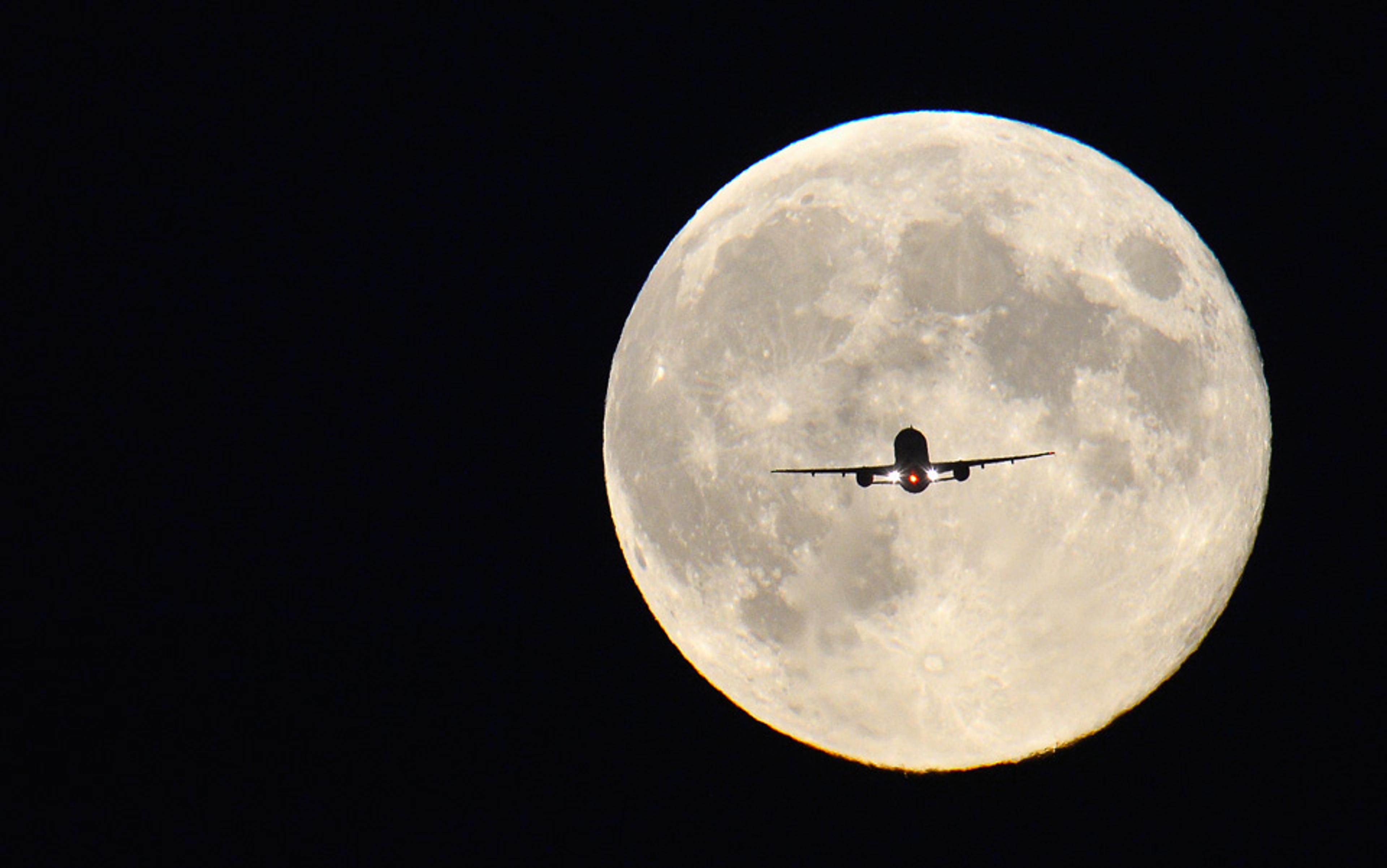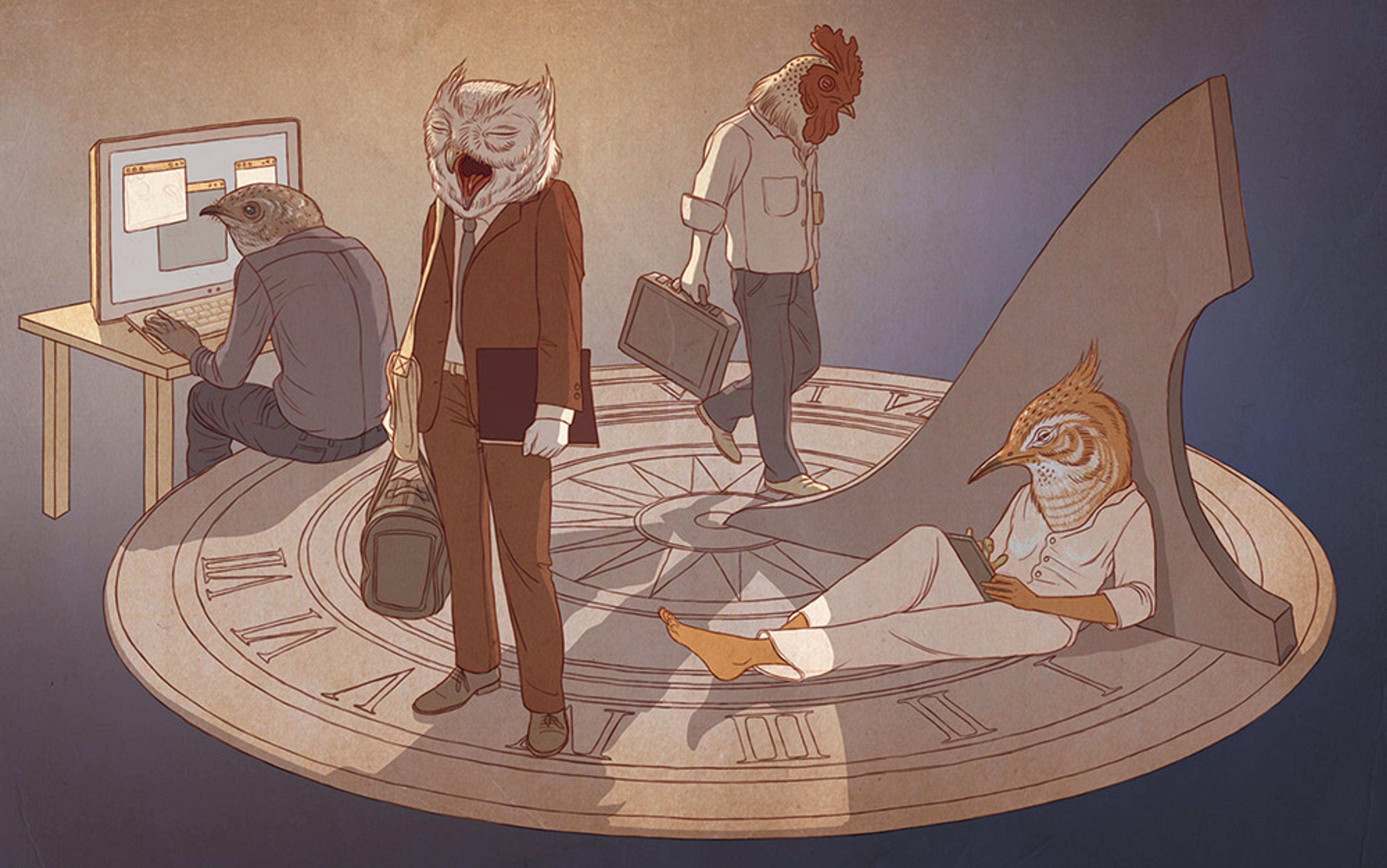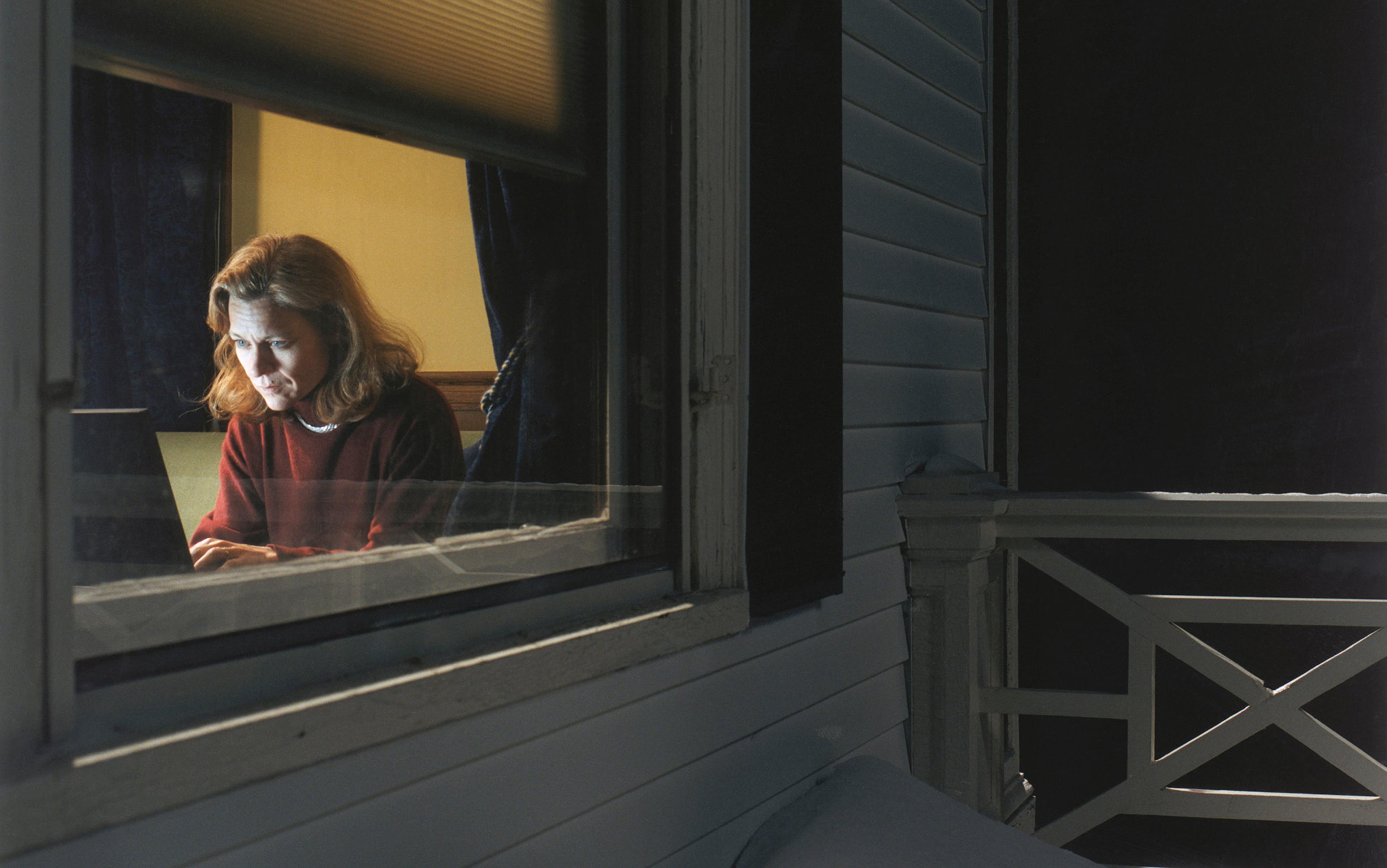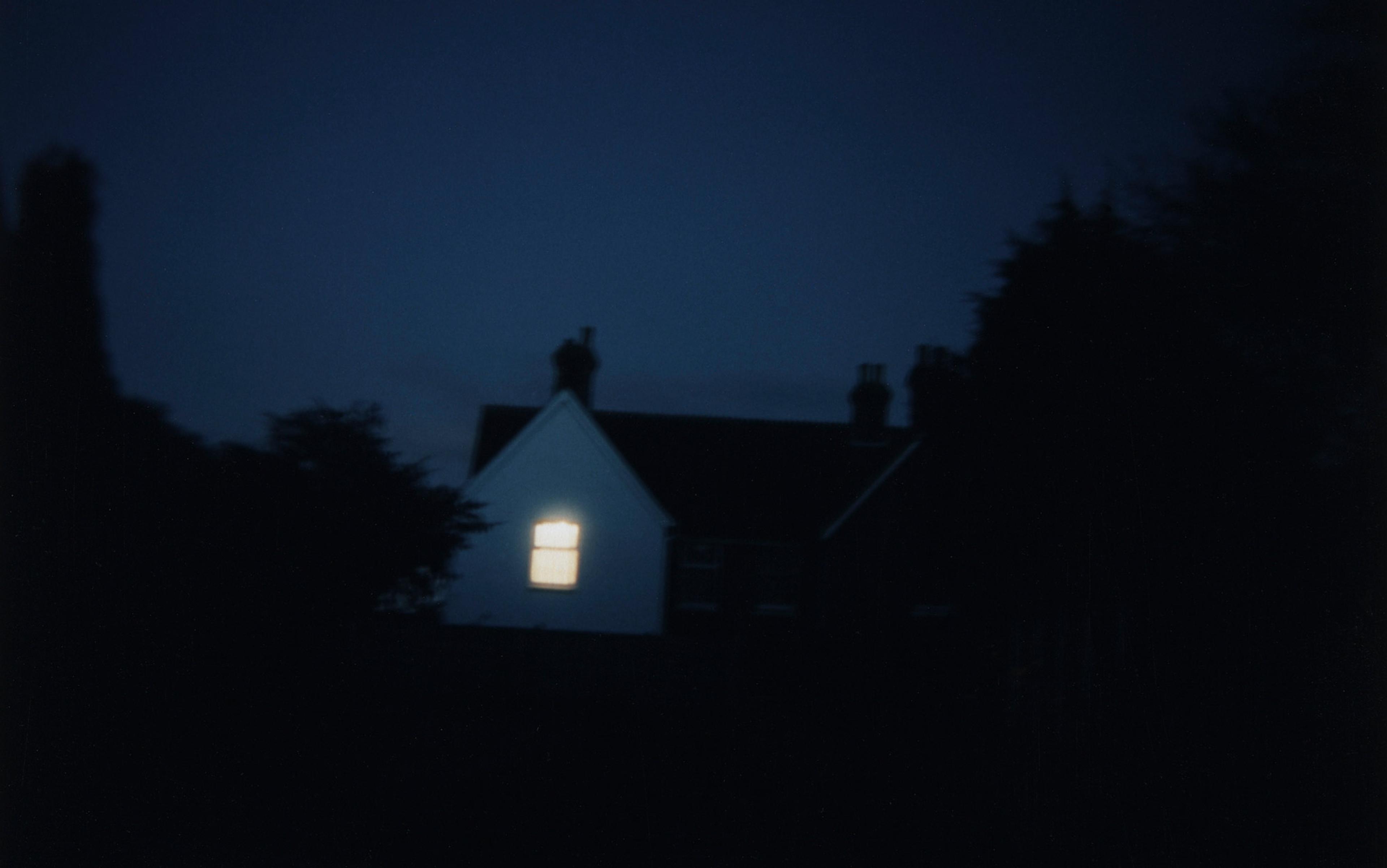The eagle owls began to call at dusk, right around the time the full Moon started to rise in the east. Watching and listening were the ecologist Vincenzo Penteriani and his crew. They would be up all night, trying to learn more about the behaviour of these owls, Europe’s largest, with wings that could spread across a king-size bed.
On this particular full-moon night, Penteriani realised that there would be a lunar eclipse. As soon as the shadow of the Earth covered the Moon, the owls fell silent.
Scientists had long thought that nocturnal animals primarily used sound to communicate. But several years ago, Penteriani caught sight of a male owl through his binoculars, just after sunset. With each call, a previously hidden patch of white feathers flashed along the owl’s throat: a visual cue, the researcher later found, that was key to the species’ mating strategy. And on nights of brightest moonlight, these calls and flashes increase.
Nearly a third of vertebrates, and more than 60 per cent of invertebrates, are active at night; the full moon is the brightest object for most of their waking hours. About two weeks after the Moon’s brightest phase, the new moon will rise at sunrise and set with the Sun, leaving the entire night starlit. The whole cycle runs about 29.5 days from new moon to new moon, and ecologists such as Penteriani, who works at the Doñana biological station in Andalusia, want to know how this shifting pattern of lunar light and darkness shapes animals’ lives.
In our world of street lights and headlamps and blinding motion sensors, we – at least, I – no longer rely on the Moon. Often, I don’t even remember that it’s up there: it seems to surprise me appearing from behind a tree, its light a shock when I wake from a dream.
Yet the Moon has always been in our stories, whether nursery rhymes or darker tales. Clouds unfurl from the face of the full moon and a man becomes a werewolf. Vampires lurk, magic potions burble, bats take wing. Given these tales of night terrors, we might think that predators prefer the full moon’s light to stalk their prey. But when the ecologists Laura Prugh (University of Alaska Fairbanks) and Christopher Golden (Harvard) surveyed the behaviour of 59 nocturnal mammals, they found that most carnivores and insectivores became less active under the brightest moon phases. Primates seemed to be the only group that was consistently more active under the full moon.
Without electric lighting, that applies to us, too. A few centuries ago, anyone who wanted to move about at night depended on the phase of the Moon. By the 17th century, those in cities relied on almanacs to plan their night-time journeys, writes the historian A Roger Ekirch in At Day’s Close: Night in Times Past (2005). In autumn, farmers used the bounty of light from the harvest moon to reap the season’s crops late into the night. Thieves and other human predators sometimes refused to work nights when the ‘tattler’ in the sky might give them away.
For millennia, humans have wondered if the Moon pulls at us with something more than its reflected light. Pliny the Elder observed that, in combination with the Sun, the Moon draws up the tides. Pliny and his compatriots also argued that this lunar force – now known as gravity – pulls on the moisture in our bodies, within our watery brains. The full moon’s drag was thought to cause everything from epilepsy to ‘lunacy’. These days, a few studies have linked human health and behaviour with the full moon, but more have refuted the connection – and gravity’s effect on us is known to be so tiny that it wouldn’t sway our aquatic inner reaches, even during the tidal extremes known as spring tides, around the new and full moons, when the Sun and Moon both exert their gravitational pull in concert.
But it’s hard to shake the feeling that something which looms so large in our night sky, and in the firmament of our imaginations, could be a simple satellite – particularly when its shifting light shapes the lives of so many of our fellow travellers, the creatures of the night.
Although we might be drawn to the showy shine of a full moon, the vanishing of this light as it starts to wane could be just as powerful. At the full moon, the Earth stands between the Moon and the Sun, and the view of our long-time companion is that of a brightly lit coin. During the following nights, as the Moon circles back toward the Sun, that coin slowly shrinks, yet the sky seems much darker than just the dwindling light would allow. And it is: the Moon rises about 50 minutes later each evening, carving a channel of darkness between the Sun dropping below the horizon and the Moon appearing.
It’s this channel that can be travelled by predators – and might have created our lingering fears about the full moon. In Tanzania, the sun sets by 7pm throughout the year. But people still cook outdoors, greet neighbours, walk to get water, often well after nightfall.
The lions here are less likely to hunt under a full moon. But as that moon wanes and the evenings darken, these hungrier lions might encounter not just their traditional prey but people still out in the open. Researchers have found that lion attacks on humans were most likely in the 10 days after the full moon.
About seven days after the full moon, it becomes a semicircle of light called the third quarter moon. This moon rises close to midnight, too late for many daytime creatures to see. The stars take over. Penteriani’s eagle owls quieten. Another week, and we can no longer see its illumination, even if we stay up all night.
When the Moon passes through our sky during the daytime, rising at sunrise and setting at sunset, some cultures call it the dark moon, others the new moon. In some calendars, the new moon is when the first slice of returning crescent is seen. Whatever the name, when the Moon passes between us and the Sun, these nights of lowest light allow other creatures to appear.
The waters of the Philippines are central to the Coral Triangle, a region of the western Pacific with hundreds of coral reefs and thousands of species of reef fish. Traditional fishermen on Samal Island bring the catch home from the surrounding waters: with 31 fishing villages on the island’s coast, it can be difficult for marine biologists such as Arthur Bos to find out how many are being caught from which species.
Researchers have found that lion attacks on humans were most likely in the 10 days after the full moon
Over a period of two years, Bos and a colleague made more than 100 visits to Peña Plata, the island’s largest fish market, where small stalls display everything from red snapper to mangoes, and customers wheedle the vendors for an extra fillet. At first, Bos simply recorded which species appeared at the market in hopes of learning more about the Davao Gulf.
But soon he noticed a pattern: during the full moon and the days that followed, reef fish were difficult, even impossible, to find. During the new moon, you could buy plenty of snappers, groupers, parrotfish, and other coral reef species – more than 80 per cent of the stalls sold reef fish.
The dark nights around the new moon cue nocturnal fish to leave their shelters among the reef, says Bos, now at the American University in Cairo. Under cover of darkness, these fish are less likely to be seen by aquatic predators – and the fishermen use this to their advantage, stalking the fish with spears and, sometimes, with electric torches.
The dark nights of the new moon also call land species out of their shelters. In Spain’s Doñana National Park, rabbits watch out for both Iberian lynx and red fox prowling the scrubland. Penteriani and his crew put radio tags on dozens of animals of all three species and followed their night-time movements throughout the lunar cycle.
He had guessed that rabbits might stay close to their burrows during the full moon, which they did. Around the new moon, they hopped further from home, using direct movements to cross long, exposed distances. The rabbits’ behaviour during the lunar cycle might be a response to changing predator behaviour, as well to the available light – their travelling urges came a few days after the new moon, and there was also a delay after the full moon before they kept closest to home.
During a new moon in other parts of the world, coyotes howl as a group. European badgers pee more. Bad weather and eclipses serve as transient dark moons; one species of nightjar has been seen to stop its moonlight foraging when heavy clouds blanketed the moon. And then, just as the night seems as if it will never brighten, a glimpse of a crescent appears in the west just after the sun goes down.
Now we think of the word crescent as the fingernail shape, but in Latin crescens referred to the waxing of the Moon – a crescendo of reflected light. About seven days after the new moon, we see a quarter moon again. If you were to look down at your thumb, you might find a pale quarter moon at the base of your nail. It’s called the lunula and formed while you were still in the womb.
Gabriele Cozzi, now an ecology postdoc at the University of Zurich, started thinking of the Moon in northern Botswana, where he was studying how lions, cheetahs, African wild dogs and hyenas used the landscape. It had been thought that these species divided themselves across a 24-hour day to avoid crossing paths: lions and hyenas were known to hunt primarily at night, while wild dogs and cheetahs were considered daytime hunters. Taking shifts makes sense, particularly for smaller predators: lions will kill wild dogs and cheetahs. Hyenas steal their hard-earned catches.
Cozzi was looking mainly at how these animals behaved at dawn and dusk. After a few months, however, he found that cheetahs and wild dogs seemed to be more active at night than he’d imagined. Every 30 days or so, the tiny accelerometers on the animals’ radio collars would show a burst of activity. Cozzi wondered what happened every month to jolt them into action. Then it came to him: ‘It has to do with moonlight.’
He saw wild dogs sleeping with large bellies the morning after a brightly lit night
He found that both wild dogs and cheetahs started picking up their activity levels at night once half the Moon was illuminated. Lions and hyenas, on the other hand, didn’t seem to change their night-time hunting patterns, regardless of what moon passed overhead.
Cheetahs are famously speedy hunters; wild dogs are no slouches either, running down their prey to exhaustion at 50km an hour or more – a difficult feat in full darkness through the thickets of the Okavango Delta. Moonlight illuminates the hunt, and, while the transmitters couldn’t track how successful their chases were, Cozzi saw wild dogs sleeping with large bellies the morning after a brightly lit night.
As the Moon waxes from first quarter through gibbous (or more-than-half full) to full, Cozzi’s wild dogs and cheetahs increase their nocturnal activity; by the full moon, 40 per cent of their typical day’s ‘work’ is done at night. One species of lunar-loving nightjars, known after their birdcall as whip-poor-wills, hatch in the few days following the new moon: in the following days, when the nestlings start demanding more food, their parents will be able to hunt under the bright moonlight. Gibbous is also a word for hunchback, and as the moon grows, it rounds its shoulders until it rolls into a great ball of light.
Oh, the full moon. It seems to bring so much light and we give it so much more to bear symbolically. We sing about the romance of moondances, and worry that the full moon might make us, or the world around, crazy. Even Penteriani calls his research, which has involved more than eight years and thousands of hours chasing animals in the darkness, ‘lunatic’. Under the full moon, the young eagle owls he studies start to leave their home nests, using the light to seek out new territory and potential prey. Older eagle owls emit their haunting hoots, flashing their white throats at each other from high perches.
Other creatures shy away from the light. The image of a colony of bats winging its way across the round moon is iconic, but many bat species become less active around the full moon. While reef fish keep themselves hidden, a fisherman in the Philippines might leave his spear at home and gather sea urchin, shellfish and sea cucumbers instead.
The circalunar clock might be ticking in time with an animal’s circadian clock to help it survive
The full moon’s link to romance, at least of the invertebrate kind, is evident along Australia’s Great Barrier Reef, where researchers and divers flock each austral spring to see the symphony of corals releasing their gametes at once, a few days after the full moon. The spectacle, people say, looks like drifting underwater snow, pink and yellow and white.
When researchers looked more closely, they found that a gene encoding a coral cryptochrome – a protein that’s sensitive to blue light – begins expressing itself much more on full-moon nights. Five days later, the corals begin to spawn. The lunar cycle cues corals to release their gametes at the same time, making successful reproduction more likely. In other species, the Moon ties into other environmental cues that aid in creating the next generation – whether cues about food availability, as for the dark-hatching whip-poor-will, or about the tides.
Researchers have even started to find animals that continue to find food, and each other, in time with the Moon’s phases, even when they can’t see its light. This circalunar clock might be ticking in co-ordination with an animal’s 24-hour circadian timepiece to help it survive.
Galápagos marine iguanas travel from their resting spots, leaving as much as four hours ahead of time, to arrive at the shoreline to graze for algae at low tide; the ones that arrive the earliest fare the best. They do this even when they can’t see the ocean and when their dark/light cycles are interrupted, suggesting to biologists that an interior clock, based on the tides and the underlying lunar cycle guides these iguanas.
Other marine species, too, seem to be able to track the Moon’s phases even without its light. The gonads of the marine bristle worm Platynereis dumerilii mature in time with the lunar cycle; it performs its mating dance and releases gametes around the new moon. Worms raised in the lab under a mimicked lunar cycle mature and reproduce in synchrony with this cycle, even once the light treatment stopped, suggesting that the Moon’s light locks in the clock’s rhythm, which can then run even without the Moon in sight.
Many of us live in places where it’s hard to see the light of the Moon, and many of the connections between ourselves and the Moon that have been passed down through generations have been discounted, or at least called into question. So when a group of chronobiologists in Switzerland sat at a riverside bar in Basel one full-moon night, and started wondering if the Moon might affect people’s sleep, the idea was a bit of a joke.
They’d done a study several years earlier, in which 17 young and 16 older volunteers had come into the sleep lab for more than three days at a time. They were completely sealed off from any cues about light, dark and time of day. Everything from the volunteers’ brainwave activity to their levels of melatonin was measured.
At the time, they were trying to find out more about how age affected sleep. Now, under the full moon, they started thinking that they might take another look at their data to see if people’s sleep and other biological rhythms were affected by the lunar cycle.
The researchers – led by Christian Cajochen, who directs the Centre for Chronobiology at the University of Basel – waited more than two years to publish their results, primarily to check and recheck their analyses, but in part to avoid any hype about how the Moon and the people beneath it might be entangled.
Because they did see entanglement. When volunteers in their study, whether old or young, stayed in the lab during the three or four days around the full moon, they spent five minutes longer trying to fall asleep than those who stayed in the lab during other times of the lunar month. Their full-moon sleep was 20 minutes shorter, they felt less rested, and slept 30 per cent less deeply than those who visited the lab during other times. They couldn’t see the Moon, and the researchers hadn’t even noted the moon phase at the time.
My friend who’s an emergency room nurse steels herself for full-moon nights of accidents, injuries, people in distress
Is there anything else that would make someone sleep this poorly? ‘It’s called growing old,’ says Anna Wirz-Justice, a chronobiologist and professor emeritus at the University of Basel.
Wirz-Justice and her colleagues are still waiting for other labs to replicate their results so that they feel confident about their findings. But their work suggests that humans, too, might have a circalunar clock, although finding this might prove difficult, as the powerful circadian cycle could be masking smaller lunar effects.
Multiple biological clocks could be governing our waking and sleeping lives, in ways we haven’t yet determined. For every study that negates the link between the Moon and birth, a midwife or obstetrician will swear that they’ve seen more babies born during the Moon’s brightest phase. My friend who’s an emergency room nurse – my most rational, dependable friend – steels herself for full-moon nights of accidents, injuries, people in distress. She says it’s one of the few patterns she and her co-workers can depend on.
Maybe our stories of the Moon run too deep. In the past, many of us were more connected to the Moon: maybe we still carry this cultural history with us, even if evidence of biological effects has faded. Or these clocks might be quietly counting the hours somewhere beneath our our screens and lamps, our false moons.
Or maybe it’s just easier to believe in the eventful moonlit nights that we accumulate throughout our own lives. No matter whether other researchers confirm the results from Basel, I will still blame my restless nights on the Moon, because otherwise this restlessness might mean I am growing old.
Perhaps we’re looking for patterns in the wrong places, while the bright Moon goes on calling prey out from their hideouts, telling the corals that the time is ripe, letting the owls sing their eerie song. Perhaps the Moon affects our lives, in ways that are more subtle, more resonant.
In wintertime where I live, the full moon rises over the mountains. You can see it first as a small patch of sky, a little bit brighter than the rest. Then a small line of light traces the edge of the jagged crest, then a whole piece of moon. Finally, the full moon hangs there, as if it could roll along the ridges and plunk into the ocean below. On full-moon nights, a small crowd gathers at the bluff before dusk. They set up cameras and telescopes, murmuring to each other, checking watches.
If we have an internal clock run by the Moon, it’s true that we might not hear it tick as loudly as those whose waking lives are spent in the dark. But look at all those people on the bluff. As the moon emerges, their voices quiet. They lean closer to their companions, they take deep breaths and gaze at this great, reflected light. Something in us is ticking, even if it’s only the beat of our hearts.

